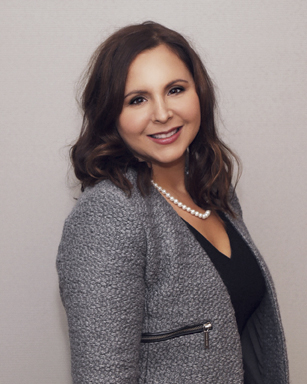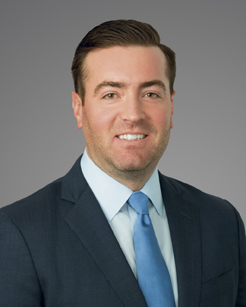Personal Lines Focus
Hello again, High-Net-Worth Clients
Advice on classic cars, cyber exposures and domestic staffing
By Christopher W. Cook
As an ‘80s child and fan of its music—if music’s playing in my house, it’s typically from Pandora’s 80s Pop station—I was saddened by the September deaths of Eddie Money and Ric Ocasek, lead vocalist of the Cars. Seeing the words money and cars—while possibly just being a simple memorialization of two great rock musicians—I also find it somewhat appropriate as a lead into this article on high-net-worth (HNW) clients. You Might Think I’m In Love with these legends’ songs— well, Baby Hold On and let the Good Times Roll. Maybe I’m A Fool who’s just pondering an introduction and trying to Shake It Up? I’ll Get By. Back to the topic. Let’s Drive.

-Anna Brusco, CIC, CPRM
Private Risk Advisor
Willis Towers Watson
Classic cars
The classic cars market is seeing a passing of the torch, so to say, as Gen-Xers and Millennials are becoming the largest population in the vehicle enthusiast sector. Like every generation, they’re purchasing the beloved cars and trucks of their youth, with a particular fondness for pickups and SUVs.
“We’re now seeing a generational shift from the era of core collector classic cars to newer, more-modern enthusiast cars,” explains McKeel Hagerty, CEO of Hagerty, an automotive lifestyle brand and provider of specialty insurance to vintage vehicle enthusiasts. “When you get past 1981, you shift from manufacturer-specific serial numbers to a standardized VIN. These newer vehicles were not traditionally as valuable or part of the collector’s space. The reality is that the next generation may not have quite as much money to spend and may want to buy more entry-level cars, or they are more interested in higher performance cars.”
Hagerty tracks market trends with valuation tools available on its website. “We track all of the live auctions and provide other sources of data,” says Hagerty. This data includes a vehicle’s value history. You can search by year, make, model or VIN. Hagerty Insider—the firm’s mobile app—also provides a market rating to track the status of the classic car market internationally, so clients can know their vehicles’ value.
Hagerty insures all types of collectible vehicles from motorsports and retired commercial, like antique fire engines or buses, to military and antique tractors. It offers guaranteed value policies so members receive the full insured amount of the vehicle in the event of a covered total loss. The Hagerty Drivers Club™ provides 24/7 roadside assistance for lockouts, battery jumps, tire changes and emergency fuel delivery, plus access to members-only events and experiences and a subscription to Hagerty’s magazine, which covers the enthusiast vehicle hobby.
But wait; I thought from reading articles that more Millennials aren’t buying cars, much less collector cars.
“What’s fascinating about all the press we’ve seen over the last decade around ‘Oh my gosh, young people aren’t into cars and they’re not getting drivers licenses’ is that it conflates a number of trends,” Hagerty says. “So much of the media about the next generation being into cars or not into cars—the stats are from the time period immediately following the financial crisis of 2008-2010, when younger people were struggling to find work, so the expense associated with owning just a daily car was very high and the thought of having extra cars was for people who had the means or were super into cars previously.
“When you look at a broader basis, we do see the younger generation getting into cars—Gen-Xers and the oldest of the Millennials, who are in their late 30s now. They’re starting to have the means to afford extra vehicles, especially when it comes to the newer, more-modern vehicles, because many of the vehicles from the 1980s and ’90s are pretty affordable. Think about Ford Mustangs and Camaros, common cars that have been built in significant numbers.”

-McKeel Hagerty
CEO
Hagerty
In terms of classic-car claims, “You don’t see the same frequency that you would in the normal automotive world,” Hagerty says. “For physical damage, the trends tend towards comprehensive losses like glass claims—generally windshields. When it comes to ‘type of incident,’ you tend to see an impact with a fixed object. You don’t think catastrophic loss; think more of the brakes failing and somebody hits their garage wall.
“When you’re looking at higher-end losses or larger collections, it’s not as much big traffic accidents but rather engine fires or fires in storage buildings. There are more fire and environmental losses or even mice infestations than accidents. It’s a low-frequency business, with not many people running into each other.”
Theft also is less common with collectible cars.
“It’s not that it doesn’t happen, but when it does, it’s very often a joyride-type theft rather than a ‘steal the car and sell the parts’ theft,” says Hagerty. “It’s the neighborhood kids being rambunctious and taking a car from somebody’s garage because they knew where the keys were.”
Natural disasters can happen anytime and anywhere (see my October Personal Lines Focus article), but there are some flood and fire risk management best practices agents and brokers can share with clients regarding their classic cars.
Simply put, “Oil and water don’t mix,” Hagerty says. “Cars have oil in them, and getting them under water is pretty tough on them. Rivers rise rather slowly, so if you live near one and it’s rising, move the car. Having a plan is the most important thing.
“With Hurricane Harvey and Superstorm Sandy, the people who moved their cars from their garage to a parking lot outside the flood plain still have their cars. With some of these storms, the evacuation protocols have fundamentally changed since Hurricane Katrina. In the areas that suddenly go under mandatory evacuation, the idea of people putting cars on trailers and hauling them out of there is no longer feasible.
“In that case, if the car is simply going to get flooded in the garage, our recommendations are to first and foremost, disconnect the battery,” he continues. “The number of times that we can get to a car quickly after it’s been flooded, the difference in damage between a car with the battery connected and not connected is very significant. Also, remove heavy objects from around the car before you go.
“Think of your own safety first. Move it if you can, protect it if possible, and have a plan no matter what. You can minimize the damage of a vintage car, especially in a flood. With wildfires it’s all about safety. Just get out of there.”
For agents and brokers looking to enter the classic car market, recognize “it’s starting to level off, but still going strong. The maximum amount of growth that we’re seeing is in the lower more entry level, under $50,000 vehicles and newer models. It’s a good way for agents to take advantage of a new business opportunity,” Hagerty concludes.
Cyber
In the “connected” world, the Internet of Things (IoT) makes life more convenient. We can change the TV station by speaking to the remote; smart devices let us turn on lights, play our favorite songs and adjust the thermostat with a brief vocal command; and smart refrigerators can inform us that our milk or other products have expired.
But with convenience comes the threat of cyberattacks, and the more stuff you have, the more opportunities a cyber criminal has to access your information. And it’s safe to say that our HNW clients probably have a lot of stuff. This notion is echoed in a 2018 Private Risk Management Association webinar titled “The Emerging Cyber Threat Environment Facing HNW Clients.”

-Patrick Doherty
Associate Managing Director, Private Client Services
K2 Intelligence
“HNW individuals and families rely on technology at an ever-increasing pace. To simplify our lives, our risk will increase,” said Anna Brusco, CIC, CPRM, private risk advisor with Willis Towers Watson and formerly vice president of new product development for AIG Private Client Group. “According to a recent Morgan Stanley survey, more HNW individuals list data security as their number one concern, even over terrorism or contracting a major illness. Of those who were surveyed, 60% feared that they’d become the victim of cybercrime without ever realizing it.”
The insurance market is responding to cyber-criminal activity by providing holistic coverages and risk management strategies. As previously stated, HNW individuals are at a high risk due to the number of smart devices in their homes. These devices share lots of data; physical loss of an iPad, cell phone or laptop can be catastrophic. Even more alarming is the data intentionally shared by your clients on their own social media accounts.
“From a third-party perspective, HNW families need to have a better understanding of utilization of social media,” says Brusco. “Everything is discoverable and traceable. HNW individuals can expose themselves to a host of personal injury-type lawsuits, such as invasion of privacy, slander or defamation of character.
“Think about posting pictures of other people’s children without their permission. There are legal repercussions, as well, if a child posts something that is untrue and defamatory, and it could come back to them and impose a liability suit on the parents. Most states have laws regarding parental liability for their minor children’s wrongful acts.”
Your HNW clients can lower their risk of certain cyberattacks by following some smart-device best practices.
“We often think of cybercrimes and hacking being its own thing, but we should be thinking of it simply as crime,” said Patrick Doherty, an associate managing director of Private Client Services at K2 Intelligence, an investigative, compliance and cyber defense services firm. “Your clients take steps to secure their physical property; they have alarm systems and video surveillance. At the device level, on the proactive cybersecurity side, you can easily have someone come in and assist your clients with ensuring that their devices are secure and have a form of monitoring on them that will alert if there’s a form of malware trying to be injected into it.”
It comes down to education, log-in security (using two-factor authentication), and password management. Have a different password for every account; each should be at least 20 characters long and difficult to crack. Have trouble remembering multiple passwords? Password managers like LastPass, Dashlane and 1Password offer a place to store all your passwords in one centralized, encrypted place.
“With passwords you provide to third parties, assume the information that you are putting out there at some point could be compromised or breached; that’s why it’s so important to have different passwords across each and every account and that those settings be strong and robust,” Doherty said.
Another overlooked risk management strategy is simply being aware of how much information about you is public on the Web.
“What is your digital footprint? Is it beyond what you want it to be?,” asked Doherty. “If so, take the steps to reduce that footprint. Change settings on social media and share less information online.
“If I can find someone’s address or active cell phone number in one, two or three clicks, I can then start to contact them or target them for traditional crime, which is that overlap between cybercrime and physical crime itself.”
Being cautious of public Wi-Fi connections and the potential lack of security is also key.
“When traveling and using public Wi-Fi, be cognizant as to what networks you are connecting to because they may not be who they say they are, or they may not have data controls in place,” Doherty said.
Doherty encourages investing in a Mi-Fi device—a global hotspot that connects to a cell network—because the free Wi-Fi at Starbucks might really be a guy at the next table with an account named Starbucks.
“Encourage clients to avoid public Wi-Fi,” he says. “You should have travel education packages and preparation packages for your clients, in addition to an overall education on risk mitigation that should occur within the home.”
Being aware of who has access to your passwords and accounts is equally important.
“We talk about taking a holistic approach because each of our clients is different; each family office is different,” said Doherty. “You want to look beyond the patriarch and matriarch and their family. Look at who they have around them. Look at who’s controlling their finances. Who’s controlling their schedule and communications.
“If I want to target a corporation, I may start at the home, knowing or thinking that the controls there will be weaker. We go in and educate families and family offices, and we need to instill that it’s the assistants, the nannies and the other individuals in their orbit that often themselves become the attack vectors or themselves become the target because they may be a lesser hurdle to get over.”
“It’s fair to say that both HNW individuals and those who manage their wealth are certainly at risk from hackers,” adds Brusco. “Hackers could find a wealth of blackmail material and information that could give them access to bank accounts. There’s a higher premium commanded for HNW individuals’ information on the Dark Web; credit cards with higher account balances will tend to yield more.
“Sometimes it’s simply about bragging rights when it comes to HNW individuals. The volume and types of data gathered through IoT devices are growing. What used to be just names, addresses, phone numbers and email addresses, now includes information like where people visit and their behaviors, like choice of food, TV shows, music, etc. Cybercriminals will look for correlations between the information they’ve stolen and sell it to the highest bidder.
“How can we engage our clients in a discussion to elevate their awareness of what their digital exposures are? Fundamentally, we need to start making sure that our clients do institute best practices,” she concludes.

-Adam Tuerack
Assistant Vice President, Regional Underwriting
AIG Private Client Group
Another area to discuss with HNW clients regards best practices around domestic staff, such as nannies, housekeepers, chefs, chauffeurs, or butlers. What coverages should you have regarding “Jeeves”?
“Workers compensation is an essential risk management tool for homeowners who employ domestic staff,” says Adam Tuerack, assistant vice president, regional underwriting, for AIG’s Private Client Group. “Workers compensation laws and regulations vary by state. In some instances, the coverage may not be required by law but may still be available for purchase. Additionally, if your clients’ private/household employees travel with them out of the country, standard coverage may not apply.
“Independent insurance advisors are in an advantageous position to identify circumstances where this coverage, or any related endorsements, should be worked into a broader personal risk management program. Each individual risk profile is different, and family office accounts may have additional complexities to address.
“Another often overlooked but critical coverage is employment practices liability insurance (EPLI),” Tuerack continues. “AIG Private Client Group recognized the need for this type of coverage in the high-net-worth space and was one of the first carriers to market EPLI for the private staff of its policyholders. This coverage is separate from workers comp and provides protection for employers (home owners, in this case) against employee lawsuits alleging discrimination, wrongful termination, harassment, etc.”
Let’s pick on Jeeves for a minute. He may whip up an elegant steak tartare, parallel park your 1969 Chevrolet Camaro with ease, handle your daily tasks and appointments with his eyes closed, or do whatever other job he was hired for, but should he be around your children, for example? Did he part on good terms with his previous employer? How much did you know about Jeeves before bringing him on board? What onboarding best practices can you share with clients?
“Background checks should be conducted prior to hire,” says Tuerack. “If the employee has access to vehicles, driving history should be considered as well.
“When your clients are onboarding new domestic staff, advise them to take some basic risk management precautions. For example, an employee handbook should be provided to outline rules and expectations. Any known hazards should be disclosed to the employee, whether they are related to the home itself or the job duties. Any applicable safety training should be provided. Creating a safe work environment is critical. For home owners with no experience managing household staff, there are many reputable staff management agencies that offer this service.”
But still, accidents happen, and claims arise.
“Domestic employment often comes without health insurance; as such, small claims can be expected to occur frequently,” says Tuerack. “‘Domestic’ is an incredibly broad job description and covers a variety of more specific tasks. Personal chefs are exposed to burns, slips and falls. Au pairs and nannies are exposed to lifting, cookingor motor vehicle accidents. House-keepers or maids frequently sufferlifting or slip-and-fall incidents. Property managers or groundskeepersoften have tool-related accidents while maintaining the home grounds. Importantly, families without proper workers compensationinsurance may be disappointed to find that their standard home liability coverage may not indemnify them at time of loss,” he concludes.
For more information:
AIG Private Client Group
www.aig.com
Hagerty
www.hagerty.com
K2 Intelligence
www.k2intelligence.com
Private Risk Management Association
www.privateriskmanagement.org
Willis Towers Watson
www.willistowerswatson.com






